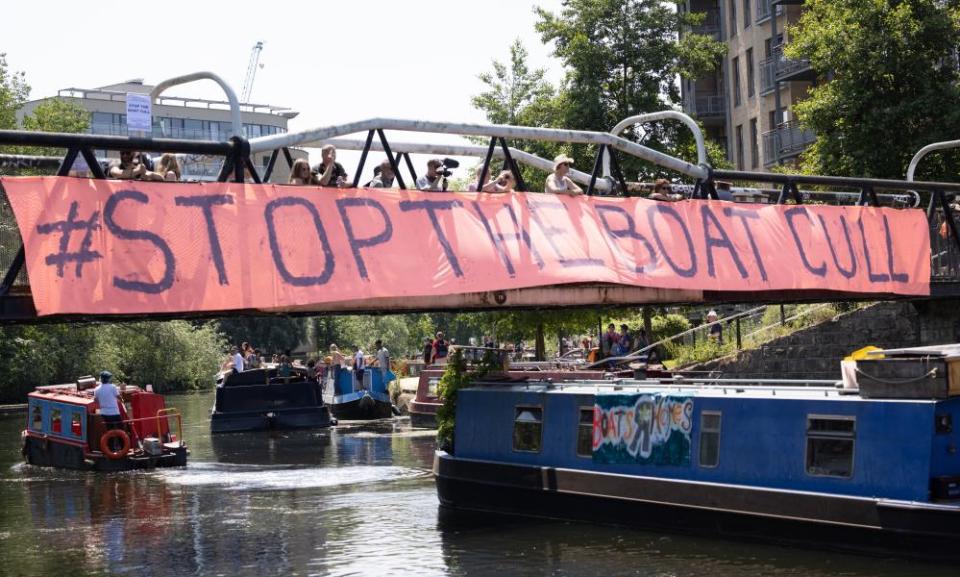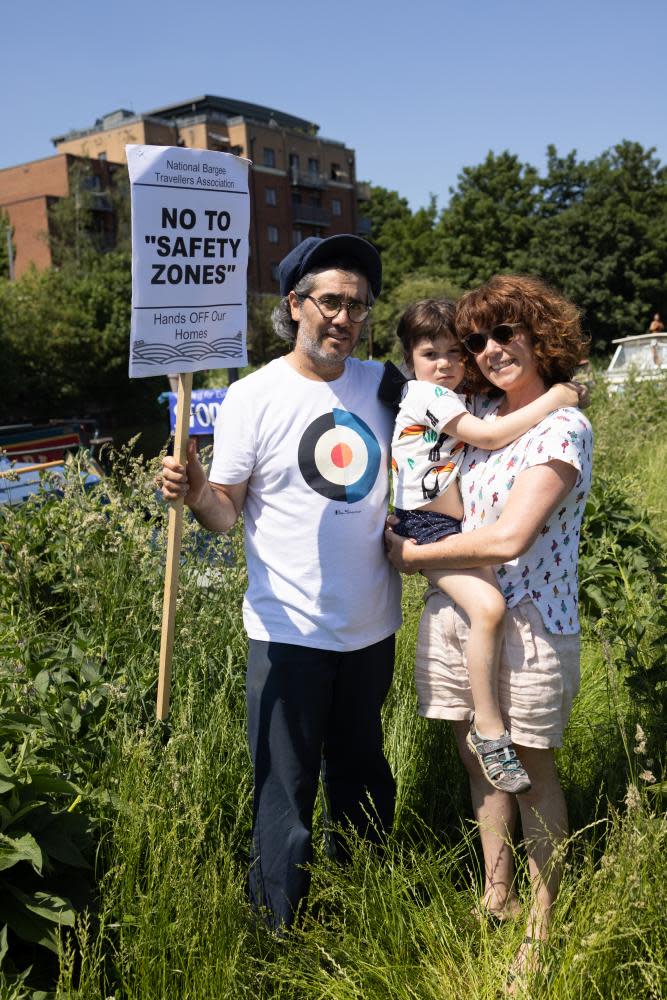London boat dwellers protest against plans they say could leave them homeless

The sun shone, the water sparkled and the trumpets blared as a flotilla of boat dwellers staged a protest in east London on Sunday about proposals they say will drive them out of their homes.
Dozens of boats, bearing banners with slogans such as “Boats are homes” and “Stop the boat cull”, contributed to a carnival atmosphere as they made their way along the River Lea in Hackney.
The boaters fear that new plans from the Canal and River Trust, which manages some of London’s waterways including the Lea, to trial “water safety zones” in Hackney and Broxbourne, Hertfordshire, will lead to a big reduction in mooring spaces. The CRT wants to bring in the proposals because it says some sections of the river are overcrowded, leading to dozens of collisions in recent years.
The boat dwellers and the CRT disagree on key points, especially about dangers of inhabited boats and rowers from rowing clubs colliding. The boaters claim the waterways are safe, that only a handful of collisions have occurred, and that in any case it is not clear what happened in many of these incidents.

The tensions between the two are rising as the waterways become more popular for living and leisure purposes. The Lea has a boating history dating back to the bronze age and for the last 200 years has been used as a freight route for commercial barges.
Boaters pay the CRT an annual licence fee that varies from boat to boat, but can be as much as £1,000 per year. As part of the agreement, they are expected to move from one mooring to another once a fortnight, although there is some flexibility around the frequency of movement, especially for families with children at school. Boat dwellers are expected to travel at least 20 miles a year along the waterways.
Boaters say that if the new plans go ahead, moorings will be restricted in popular areas such as a stretch in Hackney where many families live in boats. Their children have places in local schools and they are networked in with health and other community services.
Related: More boats on canals and rivers than in 18th century as thousands opt for life afloat
Boaters calculate that the proposed water safety zones in Hackney and Broxbourne will result in a loss of 550 mooring spaces. There are several thousand boat dwellers in London.
The trust says this figure is an exaggeration, but did not respond to the Guardian’s questions about how many mooring spaces would be lost.
The National Bargee Travellers’ Association, which represents the boaters, called the policy “profoundly ill conceived” and said boat dwellers make river towpaths safer for walkers and make a positive contribution to river and canal life, such as helping with litter clearance.
One boat dweller submitted Freedom of Information requests to ask what risk assessments had been carried out before the decision was made to implement the safety zones. The trust replied: “We believe it is not the responsibility of the trust to undertake such a risk assessment for this.”
Ony, a boater for eight years with three young children who attend school and nursery in Hackney, condemned the plans: “This is our home. These plans smack of social cleansing under the cloak of safety.”
Mercedes Donate and her partner Pedro Barrios live on a boat with their four-year-old daughter, Matilda, and operate a floating bakery called Lilla Flicka from another boat. “We have never seen any problems on the river between the boaters and the rowing boats,” said Donate. The family are worried that they might lose their home. “We want to stay here and believe we are an asset.”
However, Amanda Hosking, president of Broxbourne Rowing Club, welcomed the water safety zone plans. She said: “We have seen a huge increase in accidents on the river in recent years as traffic has grown, particularly when boats are moored on bends, at narrow pinch points or turning places. The water safety zone will make the river a much safer and more harmonious place for all river users.”
The CRT directed the Guardian to a Q&A about the issue on its website. It states: “We appreciate there is concern amongst some boaters that the proposals will affect their ability to moor in popular areas and we are committed to preserving moorings where it’s safe and practical to do so.”

 Yahoo Finance
Yahoo Finance 